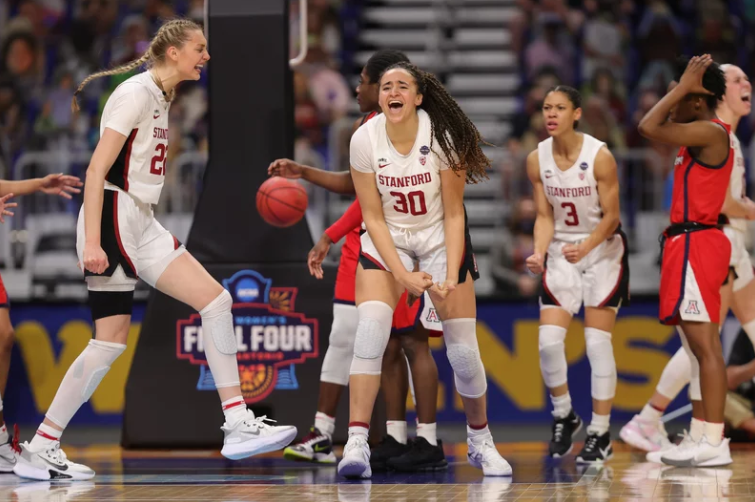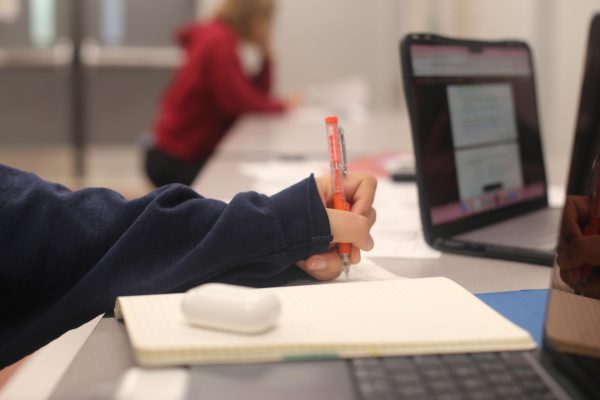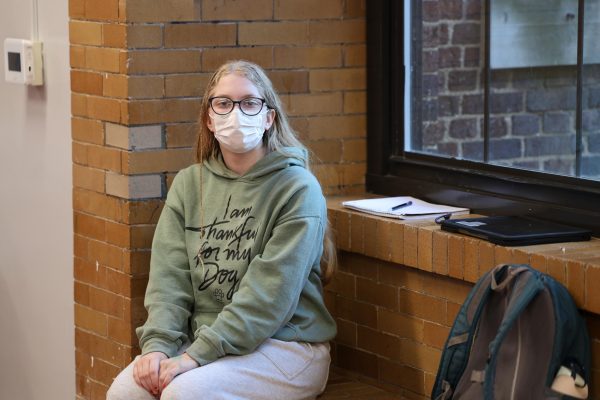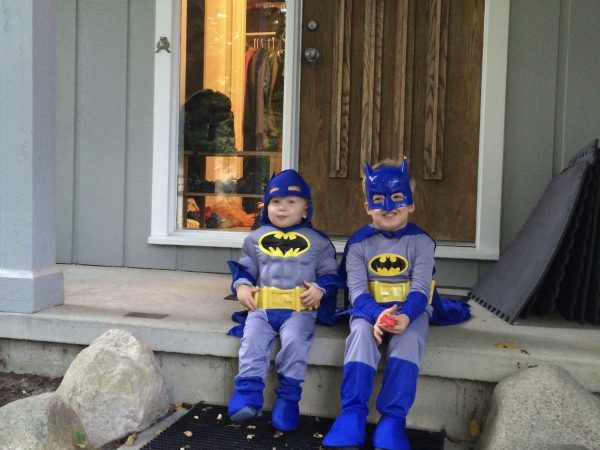The Real Madness: Inequity in Championship Basketball
Stanford guard Haley Jones Celebrates a basket in the 2021 national championship game
As winter comes to a close, Americans gear up for the highest-grossing collegiate sporting event in the United States. Of the roughly $1.15 billion dollars the National Collegiate Athletic Association (NCAA) pockets yearly, almost 90% comes from the NCAA men’s basketball national playoffs, March Madness.
Without a doubt, championship basketball is a moneymaker.
Nearly all of that money comes from the men’s tournament television deals. While the rights to air men’s college basketball playoffs are sold annually and will soon surpass $1 billion, the women’s contract is one of more than 20 NCAA national championships lumped into a 14-year, $500 million arrangement.
That means, the long-standing agreement (which has been in-action since 2011) values the entire women’s tournament TV license — not to mention 20-plus other sports’ playoffs — at less than $36 million a year.
As behind-the-scenes contracts have remained stagnant over the course of the past decade, interest in women’s basketball and women’s sports in general has increased dramatically, rendering the 2011 arrangement outdated.
Last year’s finals are a clear indication that women’s college basketball is worth more than it’s valued at, as four million people saw Stanford top Arizona for the national title. Comparatively, about four times as many watched Baylor trounce a formerly unbeaten Gonzaga team in the men’s final.
Shouldn’t the price to air each tournament reflect its popularity?
Rather, the women’s tournament is sold for less than 5% what the men’s tournament is when it brings in about 25% the fan base.
The NCAA is not monetizing or investing in women’s college basketball proportionately. If they were to do so, the potential for growth would be exponential.
$42.5 million of NCAA money is pumped into the pair of contests, while just under $15 million of that goes into the women’s side, a statistic that highlights a predictably gross funding imbalance. The Association attempts to justify this inconsistency, saying the smaller venues used make up for the near $13 million disparity.
Oregon women’s basketball center, Sedona Prince’s viral 2021 TikTok proved the inconsistencies don’t end at arena size, though.
In the 38-second clip, Prince juxtaposes the women’s ‘weight room’ provided by the NCAA: a pile of yoga mats on a folding table next to one rack of dumbbells, and the fully-equipped men’s gym, complete with squat racks, barbells, and olympic weightlifting platforms.
To top it off, referees in the women’s playoffs are not paid as much as in the men’s games. Additionally, prize packages known as ‘swag bags’ given to every player, feature women’s gifts that are consistently worth less than half the men’s.
The NCAA has the ability and responsibility to stop perpetuating a culture of inequity in basketball. The association has drawn a clear distinction between the men’s and women’s national championship tournaments, not even allowing the women’s tournament to utilize “March Madness” marketing until the uproar that Prince’s post inspired.
The imbalance is too blatant to pass over. The solutions are too clear to ignore: the NCAA needs to treat athletes equally; no matter their gender, invest in the women’s game so it has space to flourish, and make a true effort to make all basketball profitable.









